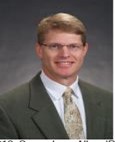contact
Jade Sutton
Administrative Assistant II
Introduction to Forensic Odontology
| Date: | Friday, February 17, 2023 |
| Time: | 11 a.m. to 1 p.m. |
| Location: | University of Maryland School of Dentistry - Live Webinar via Zoom |
| Tuition: | The Dental Professional: $69 |
| Credits: |
2 CDE credit hours - lecture The University of Maryland School of Dentistry designated this activity for 2 Continuing Dental Education hours. |
| Target Audience: | Dental Professionals |
| Presented by: | Allen Samuelson, DDS |
| Conflict of Interest: | Nothing to disclose |
Register Here
Speaker Biography
 Dr. Allen Samuelson is Associate Professor in the Division of Craniofacial and Surgical Services at the Adams School of Dentistry. He received his BA from North Carolina State University in 1986 and his DDS from the UNC School of Dentistry in 1992. He then completed a two-year general practice residency at UNC Hospitals in 1994 and a one-year internship in oral and maxillofacial surgery in 1995. He was hired full-time at the UNC School of Dentistry in 1995. He is Director of the Special Care / Geriatric clinic and also attends at UNC Hospitals OR and dental service. He teaches in the undergraduate, AEGD and GPR programs. He is a Master in the Academy of General Dentistry, Fellow in the American Academy of Hospital Dentistry, Fellow in the American College of Dentists and a Diplomate in Special Care Dentistry.
Dr. Allen Samuelson is Associate Professor in the Division of Craniofacial and Surgical Services at the Adams School of Dentistry. He received his BA from North Carolina State University in 1986 and his DDS from the UNC School of Dentistry in 1992. He then completed a two-year general practice residency at UNC Hospitals in 1994 and a one-year internship in oral and maxillofacial surgery in 1995. He was hired full-time at the UNC School of Dentistry in 1995. He is Director of the Special Care / Geriatric clinic and also attends at UNC Hospitals OR and dental service. He teaches in the undergraduate, AEGD and GPR programs. He is a Master in the Academy of General Dentistry, Fellow in the American Academy of Hospital Dentistry, Fellow in the American College of Dentists and a Diplomate in Special Care Dentistry.
Course Description
Forensic odontology is the proper handling, examination, and analysis of dental and oral and maxillofacial remains for use in legal proceedings or by investigative agencies. Forensic dentists are asked to assist investigative agencies to identify recovered human remains from natural disasters to terrorist attacks, airplane crashes, earthquakes, fires and other catastrophic events. In addition they are asked to examine bite marks for perpetrator, decedent or victim identification. Forensic dentists may also be asked to assist in determining age, sex, race, occupation, previous dental history and socioeconomic status of unidentified and missing humans. Identification is done by the comparison of antemortem and postmortem dental records including chart notes, radiographs, stone casts, and other information. In this course, we will discuss many of these facets of forensic odontology.
Course Objectives
At the conclusion of this course, participants should be able to:
- Understand how an autopsy is performed and tissue analyzed
- Compare postmortem and antemortem data for decedent identification
- Know the importance of maintaining excellent dental records and in particular, charting
- Recognize the general organization of forensic services at the state level
- Document a forensic case and compose a forensic document for use by the legal profession
